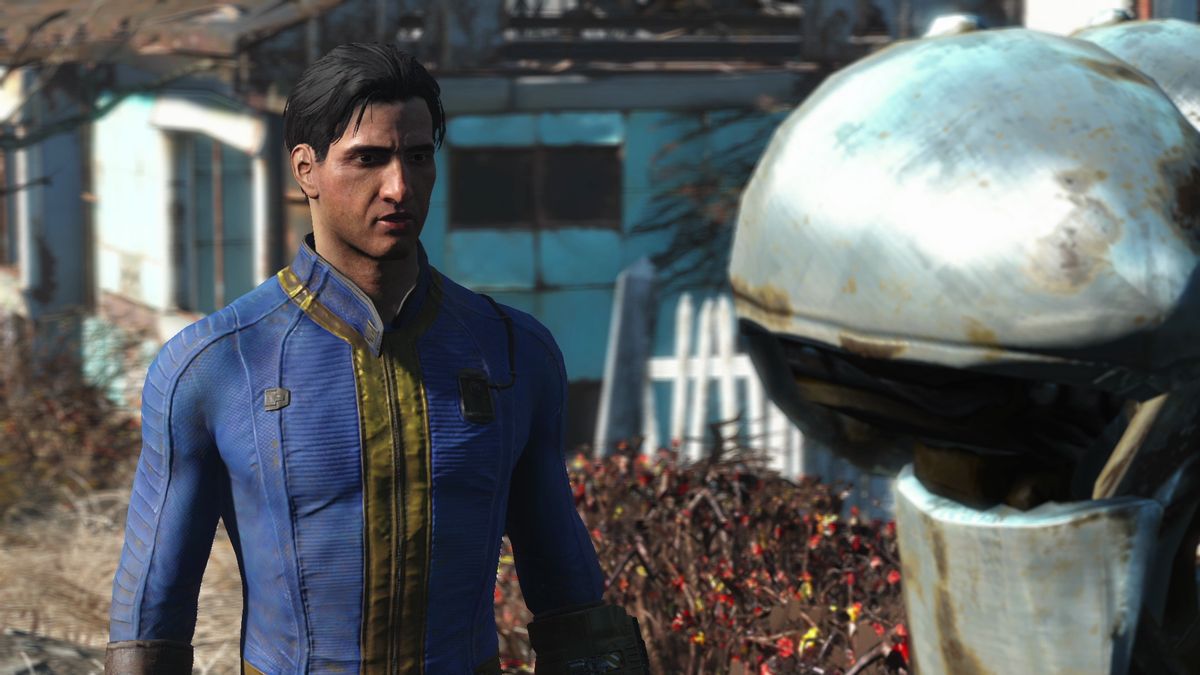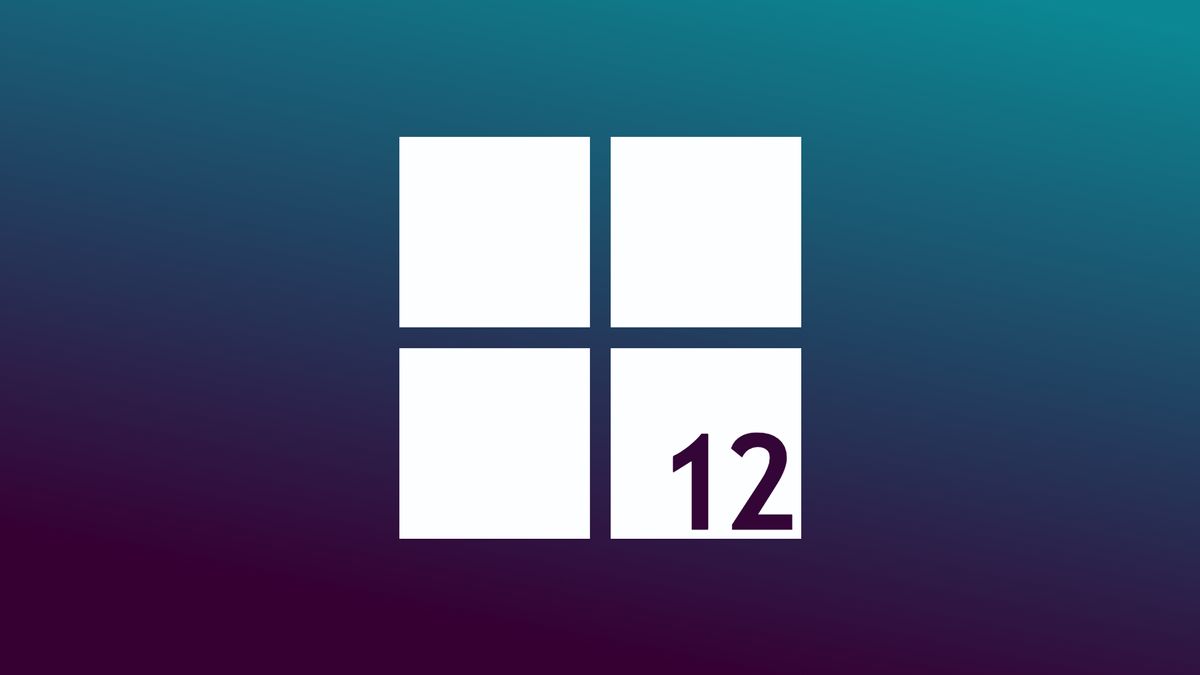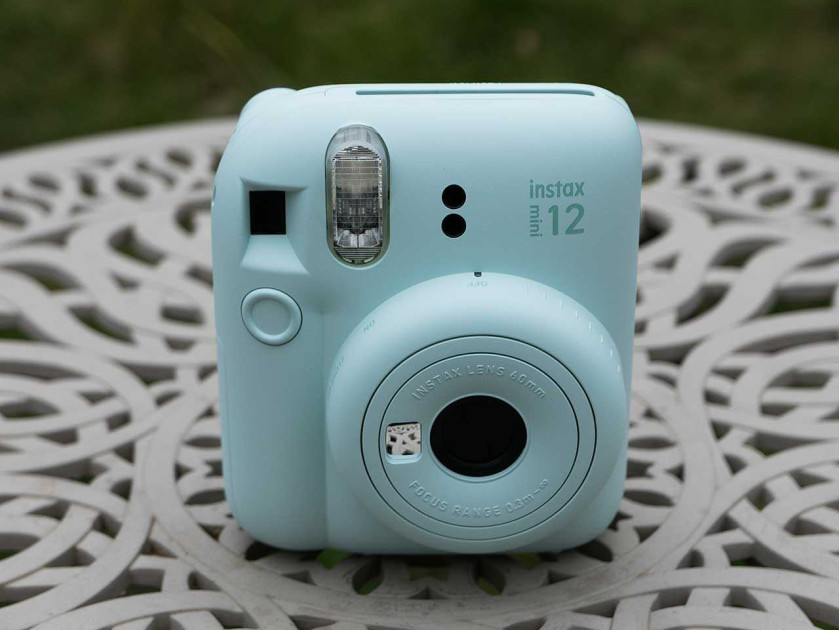

Introduction
The Instax Mini 12 is Fujifilm’s new entry-level model in its extensive range of instant photography cameras, replacing the three-year-old Instax Mini 11.
Designed to offer a purely point-and-shoot experience that just delivers great results, the Mini12 introduces three new features to help achieve that aim – automatic flash control, close-up mode and a parallax correction feature.
Now the camera automatically adjusts the flash brightness as well as the shutter speed and other settings to suit the ambient lighting conditions, making sure that the resulting image is not over or under exposed, a key consideration when each picture sets you back the best part of £$1.
The previous Selfie mode on the Instax 11 has become the Close-up mode on the Instax 12 to better indicate what it can be used for, not just selfies but also any subject that’s positioned between 0.3 m to 0.5 m away from the camera.
Meanwhile, the new Parallax Correction feature aligns the camera’s viewfinder with the lens whilst using the Close-Up Mode, reducing object shifts and resulting in a more aligned photo than on the previous model.
Those three key improvements alone are enough to elevate the Instax Mini 12 above its predecessor and cement Fujfilm’s position as the go to choice for instant photography newcomers.
Maybe more importantly for this target market, Fujifilm have also refreshed the design of the Mini 12, with a more inflated, iconic bubble shape and a wide array of colourways.
The Fujifilm Instax Mini 12 comes in five pastel colours; Blossom Pink, Mint Green, Clay White, Lilac Purple, and Pastel Blue.
The step up from the Instax Mini 11 to the Instax Mini 12 is not reflected too much in the cost, with a £79 / $79 price-tag that is only £10 more than before.
It uses the readily available Fujifilm Instax Mini paper which comes in a cartridge containing 10 sheets. A single pack of 10 sheets typically costs around £8.99 / $7.99, but you can usually buy multi-packs for a lower cost per unit. For instance, a two pack is usually £14.99 / $13.99 each and a five pack of 10 sheets will set you back anything from £34.99 / $34.99.
Ease of Use
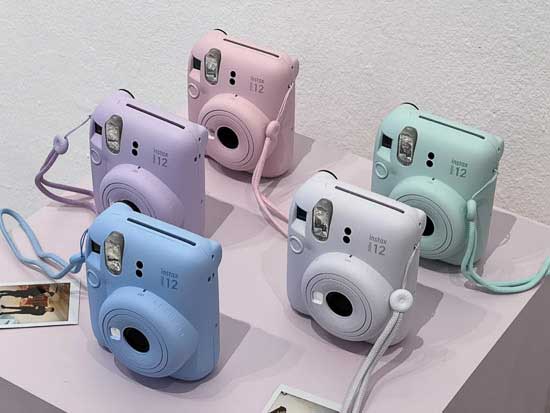 |
As this is an entry-level instant film camera aimed at beginners, the Fujifilm Instax Mini 12 is thankfully very easy to initially setup. It also comes with a concise instruction manual to follow for a smooth experience.
To get started, you’ll need to load the camera with the two AA batteries that are supplied in the box and, of course, the instant film. Before popping open the large Instax embossed rear door, you’ll need to check the two small windows.
If the window by the rear door’s catch is yellow, then there is film already loaded. If it’s black, it’s empty. The other window displays how many sheets remain in the pack of ten cartridge – when S is displayed, it is safe to load a cartridge.
With the rear door open, the yellow mark on the film cartridge lines up with the one inside the camera. Slot in the cartridge and close the door. Simple.
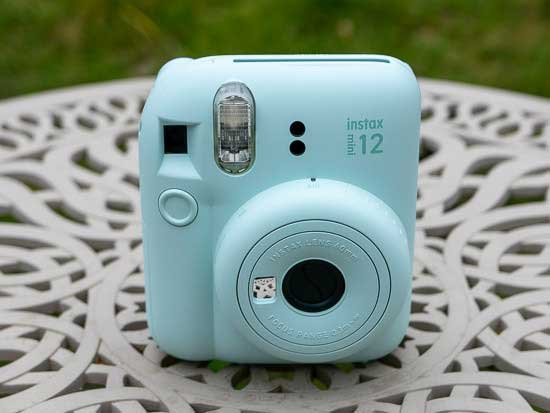 |
Before you get started, you’ll need to take a shot to eject what is referred to as the safety sheet from the cartridge.
To turn the camera on, you now simply twist the lens clockwise from the Off to the On position. This action replaces the On/Off button on the Instax Mini 11 which popped the lens into position ready to take photos.
A second, much smaller twisting action of the lens barrel then puts the lens into Close-up mode, which changes the close focus distance to 0.3-0.5m. Otherwise, the focus range is from 0.5m to infinity.
You’ll notice that the lens is labelled with a 60mm focal length, which in this format translates to around 35mm – that’s a moderately wide angle of view.
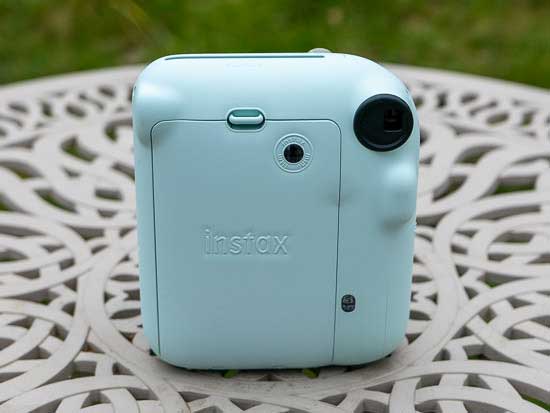 |
With a subject that’s around a metre away, you’ll be able to include a good amount of surroundings in the shot. For a selfie from around 0.4m, you can comfortably fit in two people, but if anyone else jumps in it’s a real squeeze.
Landscape format is more accommodating, but it’s a little more awkward to hold the camera and operate the shutter release button in this orientation.
Shots can be composed using the basic optical viewfinder, although you won’t want to rely on its accuracy too much, something that can be disconcerting for the first-time user. Also, you really have to press your eye in close in order to see through the finder in the first place.
Fujifilm have greatly improved the accuracy for close up subjects, though. Now when you select the Close-up mode, your main subject will be right
in the center. of the frame, rather than off to one side as on the previous model.
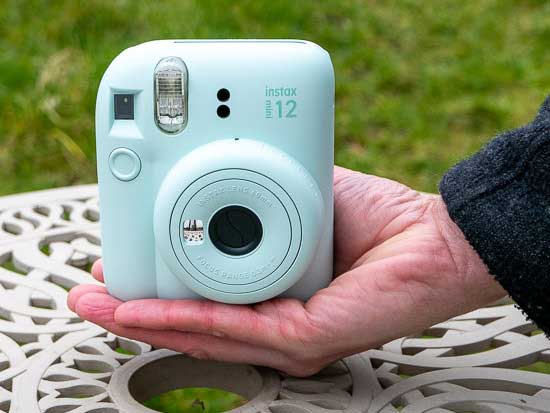 |
The Instax Mini 12 is primarily designed to be used in portrait format with the built-in flash at the top.
For the most accurate framing, the ‘O’ seen in the middle through the viewfinder should be positioned slightly up and to the right of centre to your subject. If you switch to landscape format with the flash still on top, then the ‘O’ should be slightly to the upper left of centre.
On the lens itself is a small mirror that can be used as a guide for selfies. This selfie mirror is a surprisingly helpful aid, but again because of the lens position you’ll consciously need to tweak of angle of the camera to frame yourself in the centre. And with the camera turned on you, those tweaks are reversed as you look at the camera.
Guidance regarding composition can be found in the instruction manual – it’s possibly the most tricky aspect of this camera to consciously remember.
 |
When taking shots, you’ll also need to be aware of where your hands are holding the camera because you really don’t want to obstruct either the built-in flash or crucially the auto exposure (AE) light and Flash Light sensors, both of which are found above the lens.
It’s worth noting that the automatic flash fires every time a photo is taken. Fujifilm have improved the flash so that it adjusts the power automatically, even in Close-up mode, so that you just the right amount of light without overexposing the photo.
Even so, if we had a choice, the flash would be on by default but with an option of deactivating it for the picture you are about to take.
With it’s fun new bubble design, the Instax Mini 12 is a very distinctive looking, almost toy-like camera which is available in five attractively muted colours. We particularly liked the Mint Green version that we had for this test.
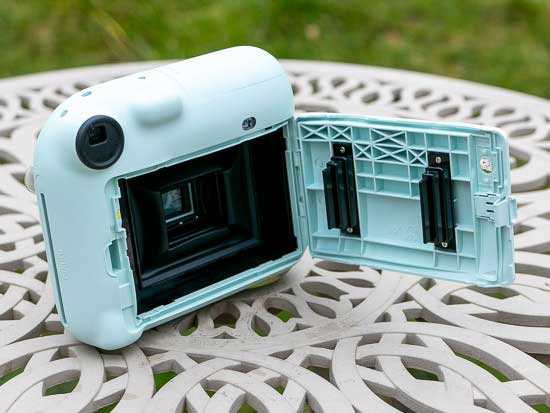 |
You get one colour-matching accessory supplied with the camera, in our case a mint green wrist strap.
Somewhat sadly, the two clip-on buttons that were supplied with the previous Instax 11 model to help customise the shutter release are no longer included in the box.
Size-wise, the Instax Mini 12 fits in the hand comfortably enough. There’s not a single right-angle on the curved plastic body, which has a smooth and slippy non-textured surface.
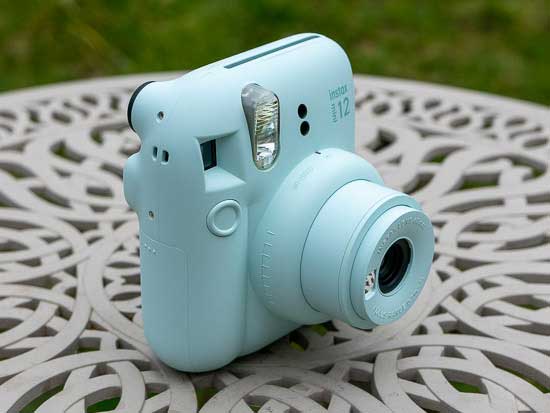 |
As such, we found ourselves needing to concentrate a little to avoid dropping the Instax Mini 12 and certainly appreciated the wrist strap as a back-up. At this price-point the camera is of course made from plastic, so ideally you won’t want to drop it from any great height, but it is robust enough if you do.
For a secure hold and to avoid obstructing those light sensors, we found placing both hands on the underside of the camera the most comfortable. However, there is no really intuitive way to hold the camera properly in landscape format.
With Instant photography, there is a certain compulsive nature to it. Capture a moment and enjoy it together there and then. Take your keepsake with you. Give one away, share the joy.
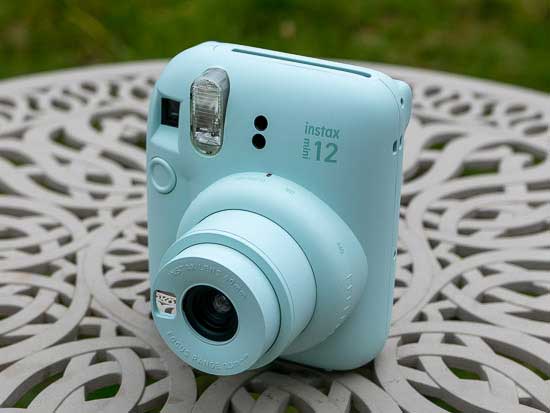 |
Of course that enjoyment factor is tarnished if the camera is churning out pictures that appear too bright or too dark, too blown out by the flash or with off-kilter framing that cuts out half of your subject. You don’t really want photos that have to go straight in the bin.
Thankfully, with the improved flash and the more accurate close-up framing together with full auto-exposure on board, good photos are a much more regular experience from Fujifilm’s most affordable Instax camera.
Of course, you never know exactly what you will get, especially when it comes to framing, but you at least get something close enough. Beginners should really take the time to read the instruction manual and also be prepared for some framing frustrations when first using the camera.
Even so, the Fujifilm Instax Mini 12 is undeniably a camera that’s both fun to look at and fun to use, delivering a satisfyingly analog experience in a mostly digital world with a minimum of fuss.
Image Quality

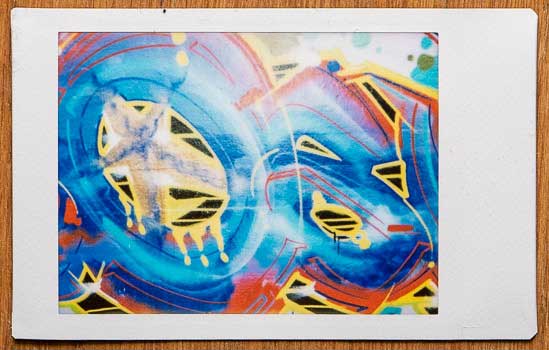
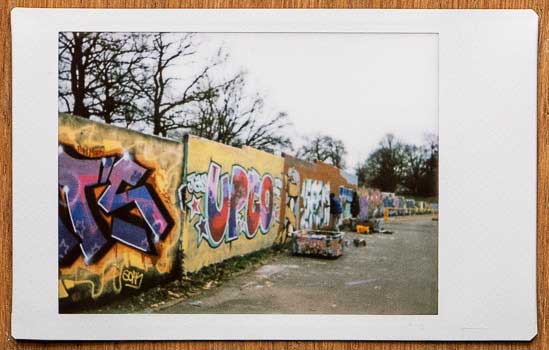
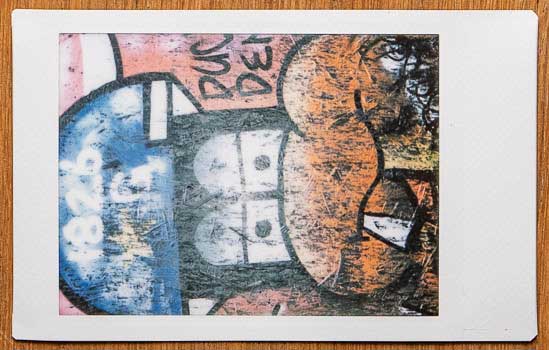
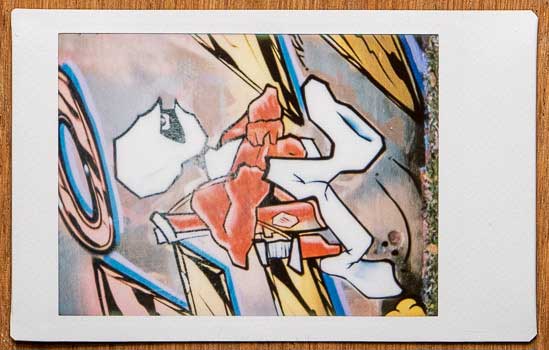
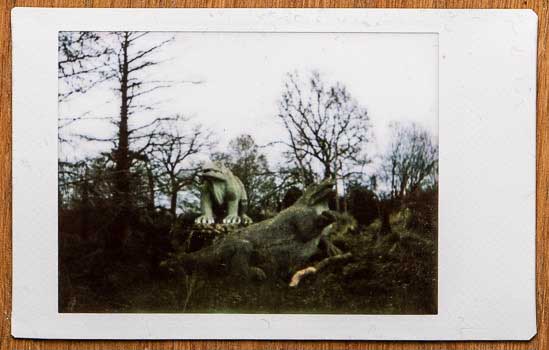

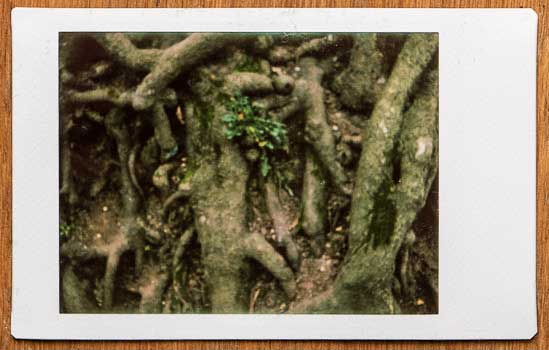

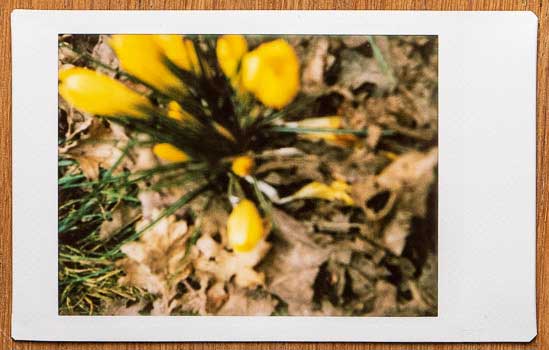
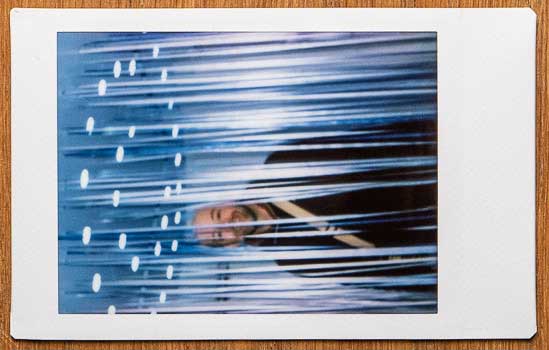

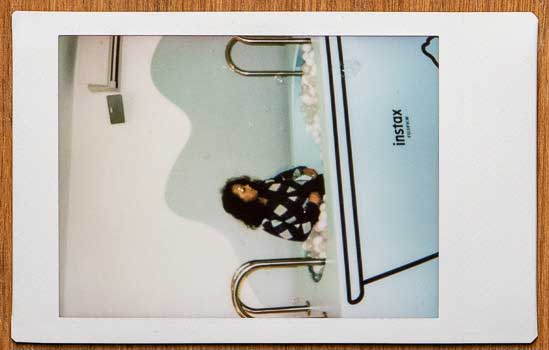
Product Images






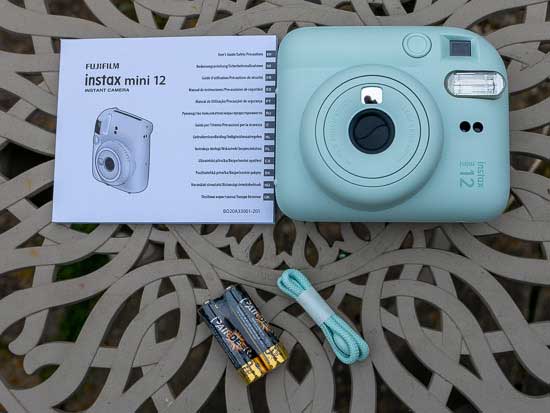






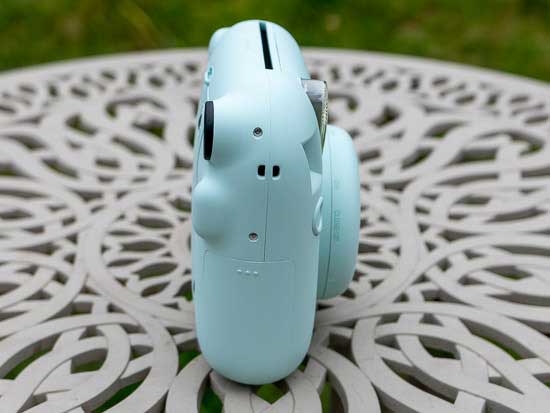


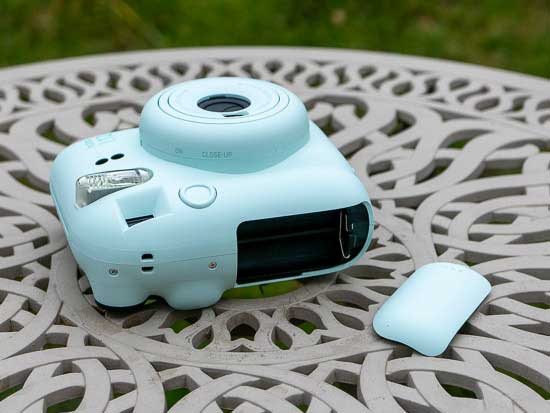

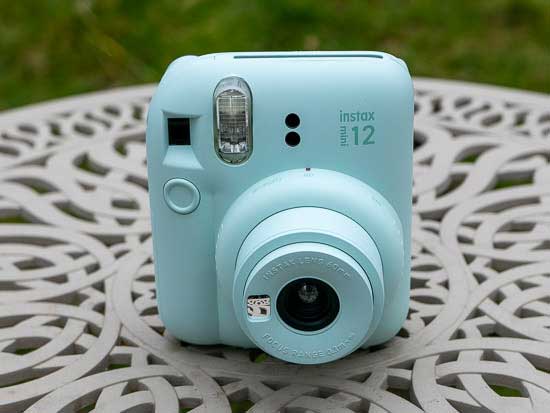

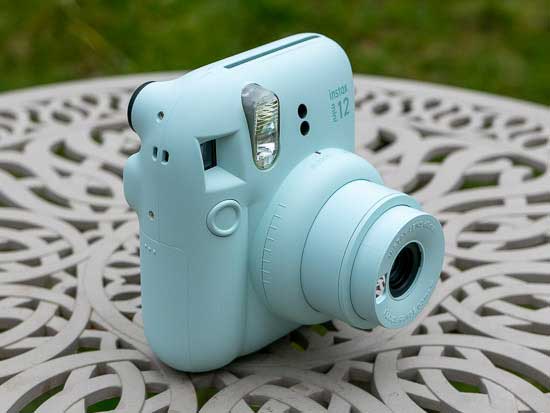
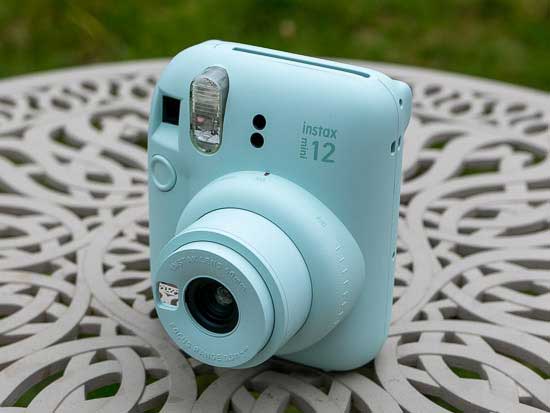



Conclusion
The Fujifilm Instax Mini 12 refines the previous model by enhancing the picture quality, improving the close-up/selfie mode, refining the operation and adopting a more fun bubble-like design. Taken together, these help to keep the Instax Mini 12 at the top of the budget-level instant film camera heap.
Although it costs an extra £$10 more than the Instax 11, which itself cost an extra £$10 more than the Instax 9, this new Mini model is still pretty good value for money, especially when set against the 2023 backdrop of rapidly rising global prices in all walks of life.
The automatic flash brightness and more accurate close-up framing both help to ensure that fewer photos end up in the bin, which is crucially important when each one can cost around £$1 to make.
We also enjoyed the simpler operation afforded by the twisting lens mechanism, which makes turning the camera on, off and setting it to close-up mode more intuitive than before.
Not only is the Instax 12 more technically advanced than its predecessor, it also looks better too, a crucial consideration for its target market who are looking for fun as well as competence.
Overall, while the new Mini 12 may not represent a giant leap forwards for Instax cameras, it is more accomplished and more fun to use than its predecessor, and is still a great choice as your first instant photography camera.
| Ratings (out of 5) | |
|---|---|
| Design | 4.5 |
| Features | 4 |
| Ease-of-use | 4.5 |
| Image quality | 4 |
| Value for money | 4 |
Main Rivals
Listed below are some of the rivals of the Fujifilm Instax Mini 12.
The Instax Mini 11 is Fujifilm’s new entry-point into the exciting world of instant film photography. Now featuring auto exposure and a built-in ‘selfie’ lens setting, is this the best instant camera for beginners? Read our in-depth Fujifilm Instax Mini 11 review to find out…
The Instax Mini 40 is a classic, retro-inspired entry-point into the world of instant film photography. Featuring auto-exposure and a built-in ‘selfie’ lens setting, is it worth the asking price of $99 / £89? Read our in-depth Fujifilm Instax Mini 40 review to find out…
The new Fujifilm Instax Mini Evo combines a digital camera with an Instax printer to enable you to take photos and make instant prints from the same device. It also offers the ability to print images from your smartphone onto the Instax Mini film. Read our in-depth Fujifilm Instax Mini Evo review, complete with downloadable sample images, to find out if it’s worth the £174.99 / S199.99 asking price…
The Fujifilm Instax Square SQ1 is the latest instant camera to use the square Instax film format. Simpler to use and more stylish than the SQ6, is this the best square-format instant camera on the market? Find out now by reading our Instax SQ1 review…
Review Roundup
Reviews of the Fujifilm Instax Mini 12 from around the web.
The Instax Mini 12 ($79.95) is the latest in Fujifilm’s lineup of affordable, entry-level instant cameras. The new version largely functions like its predecessor, the Mini 11, with carryovers such as a versatile selfie mirror and a close-up focus mode, but we find it more intuitive to use overall thanks to its twisting lens collar.
Read the full review »
There are loads and loads of serious digital cameras. But there aren’t a whole lot of fun cameras out there that are truly meant to be super carefree. The Fujifilm Instax Mini 12 isn’t a digital camera by any means, but it surely can be very fun to use.
Read the full review »
Specifications
-
Film used
FUJIFILM instax mini Instant Film (sold separately)
-
Photo Picture Size
62 mm × 46 mm
-
Lens
2 components, 2 elements, f = 60 mm, 1:12.7
-
Viewfinder
Real image finder, 0.37×,
with target spot
Features parallax correction function
for Close-Up Mode -
Shooting Range
0.3 m and beyond (use Close-Up Mode for 0.3 m to 0.5 m)
-
Shutter
Programmed electronic shutter
1/2 to 1/250 sec.
Slow synchro for low light -
Exposure Control
Automatic, Lv 5.0 to 14.5 (ISO 800)
-
Film Ejection
Automatic
-
Film Developing Time
Approx. 90 seconds (varies depending on the ambient temperature)
-
Flash
Constant firing flash (automatic light adjustment), recycle time: 7 seconds or less (when using new batteries), effective flash range: 0.3 to 2.2 m
-
Power Supply
Two AA-size alkaline batteries (LR6),
capacity: approx. 10 instax mini film packs of 10 exposures each (depends on usage conditions)
* The supplied batteries are for trial use.
When they run out, replace them with new ones (alkaline batteries).
The performance of alkaline batteries varies depending on the brand.
* Manganese batteries cannot be used. -
Auto Power Off Time
After 5 minutes
-
Other
Includes film counter and film pack confirmation window
-
Dimensions
104 mm×66.6 mm×122 mm
-
Weight
306 g (without batteries, strap, and film)
- Simulated Image.
- Develops in approx.90secs.
- The above specifications are subject to change for performance improvement.

